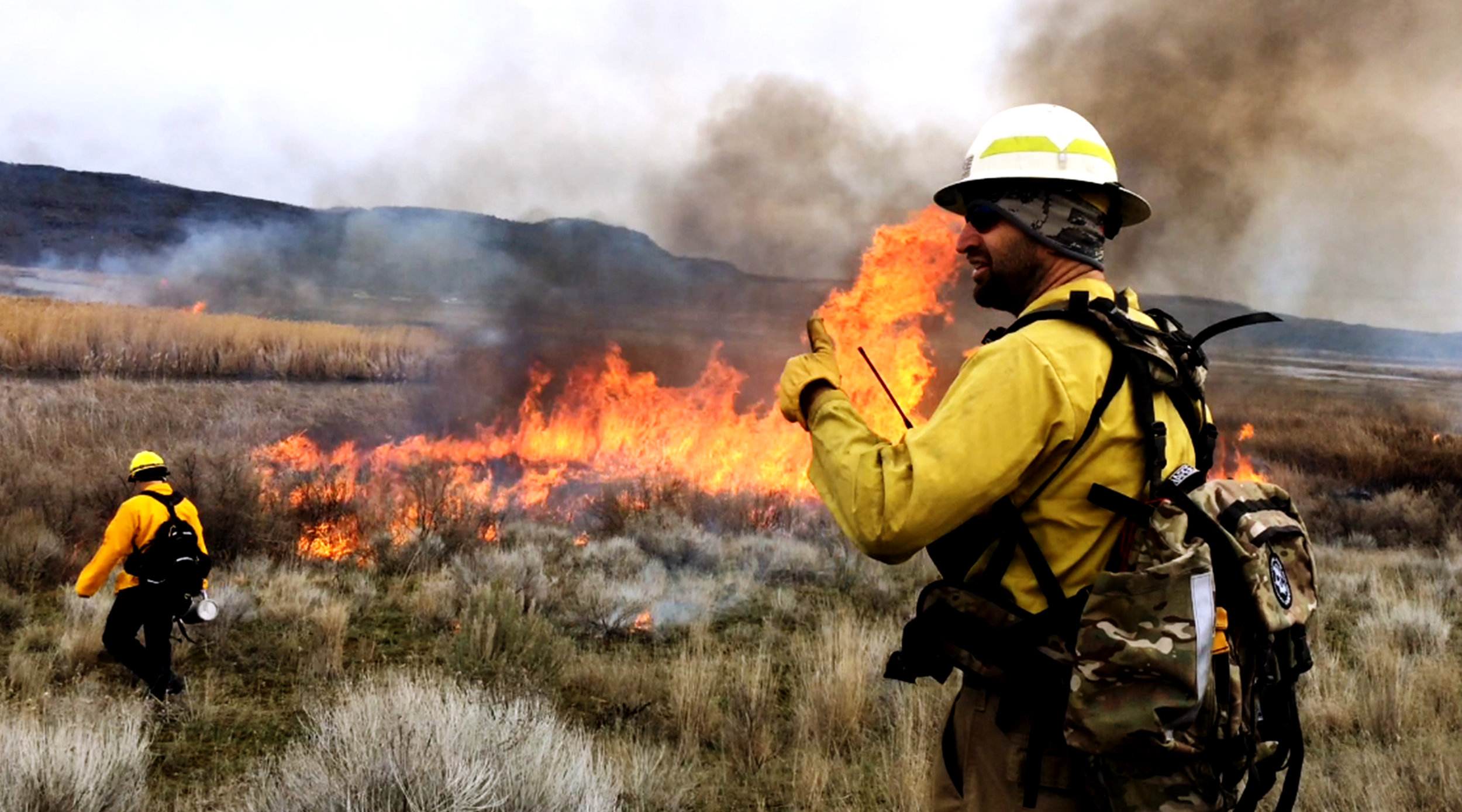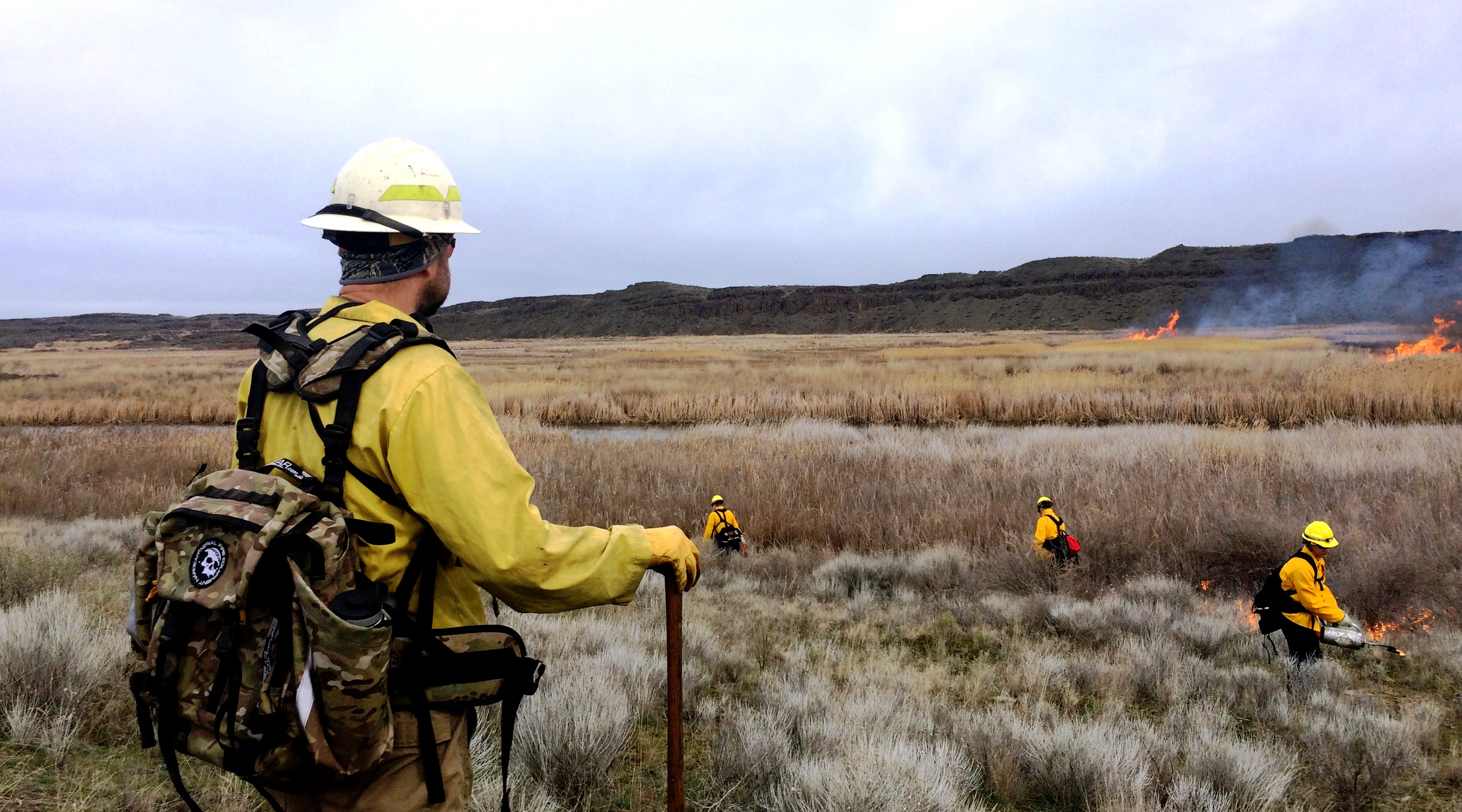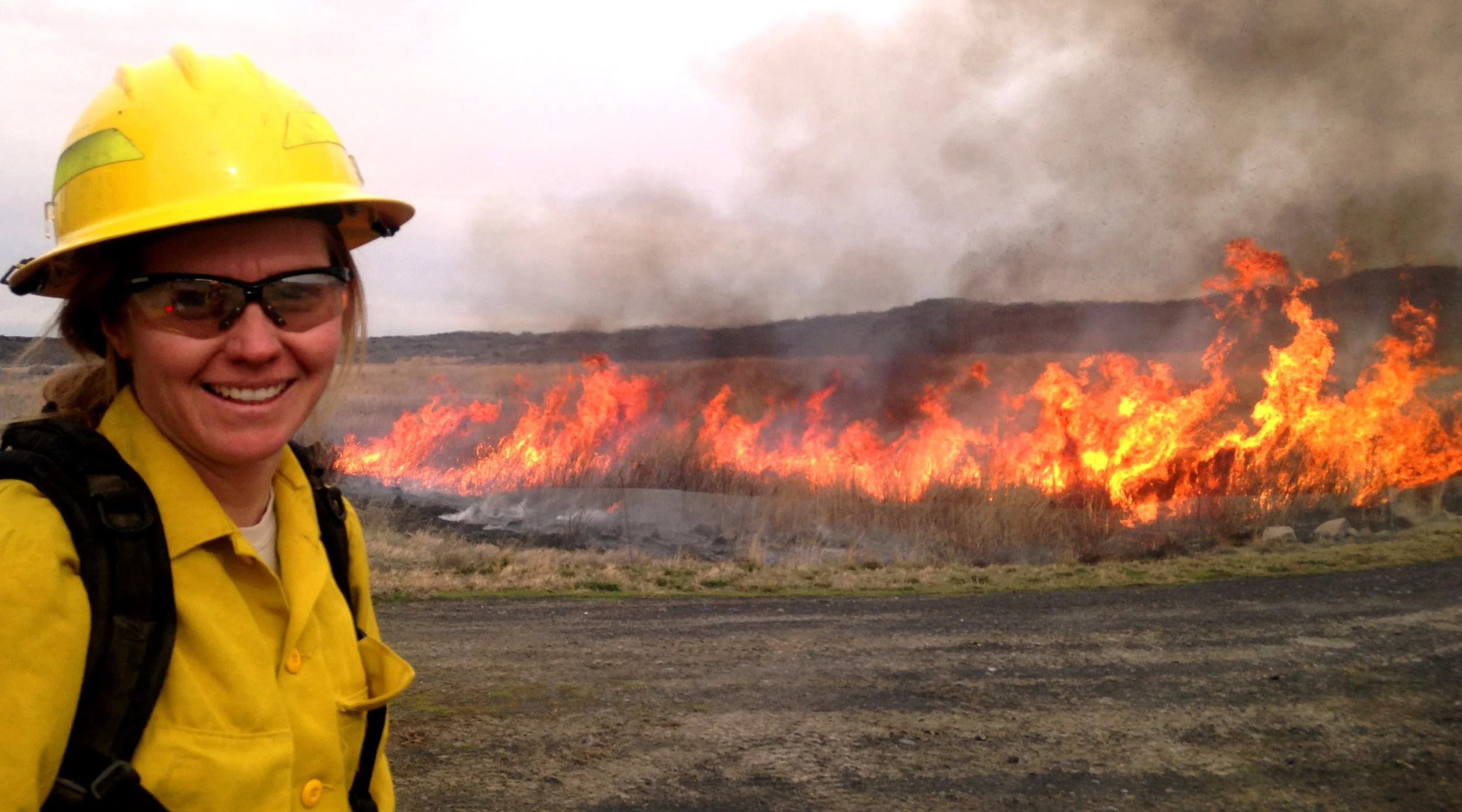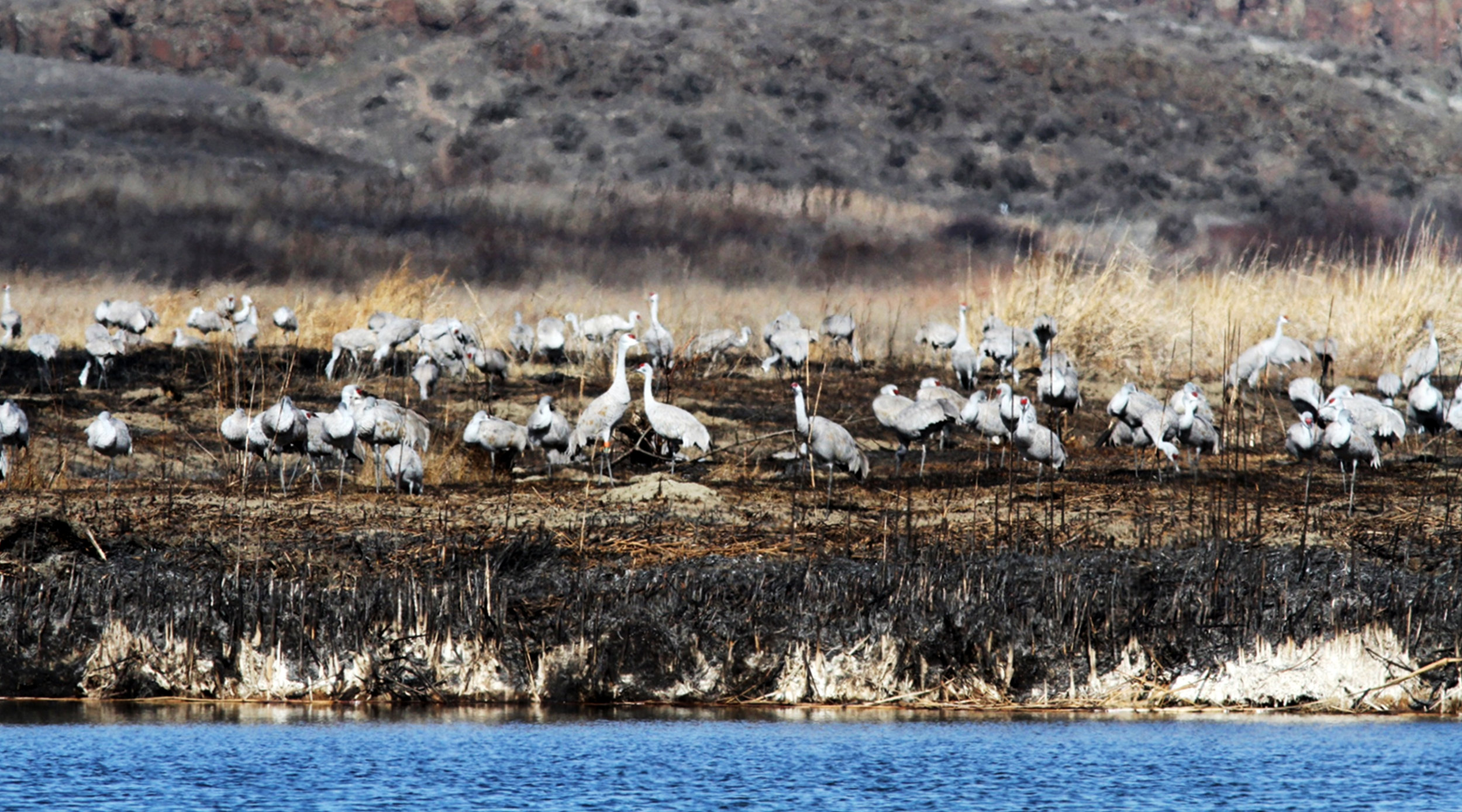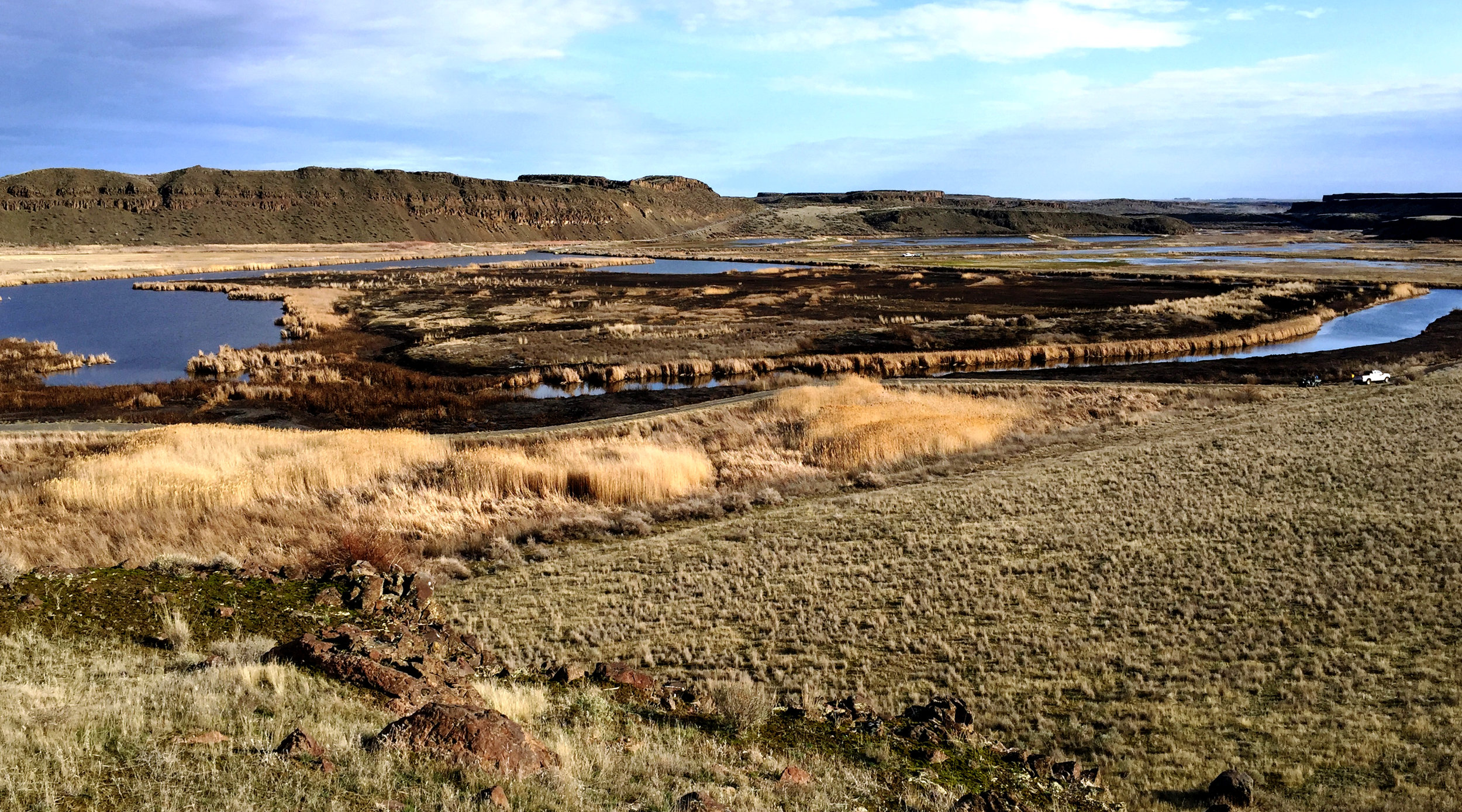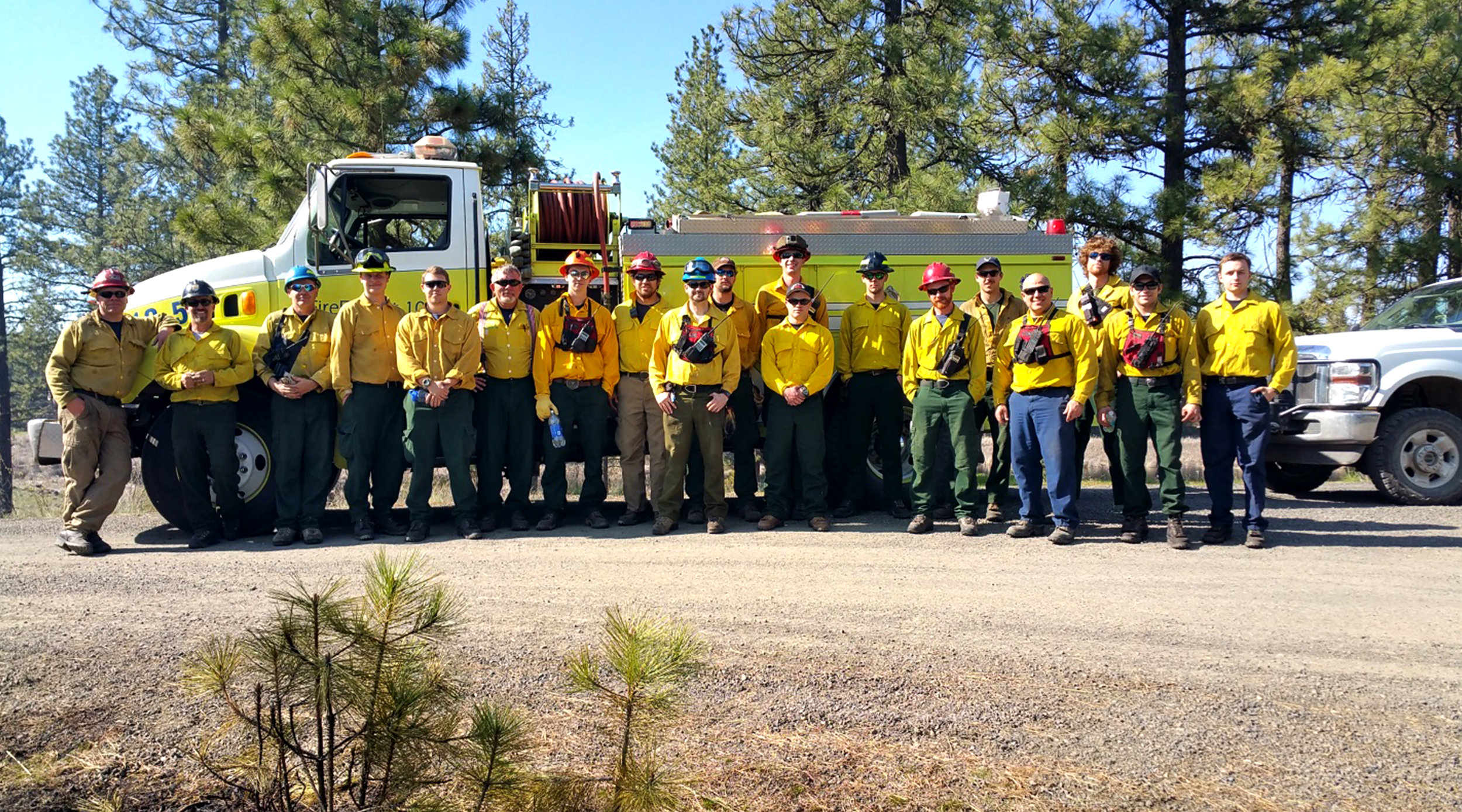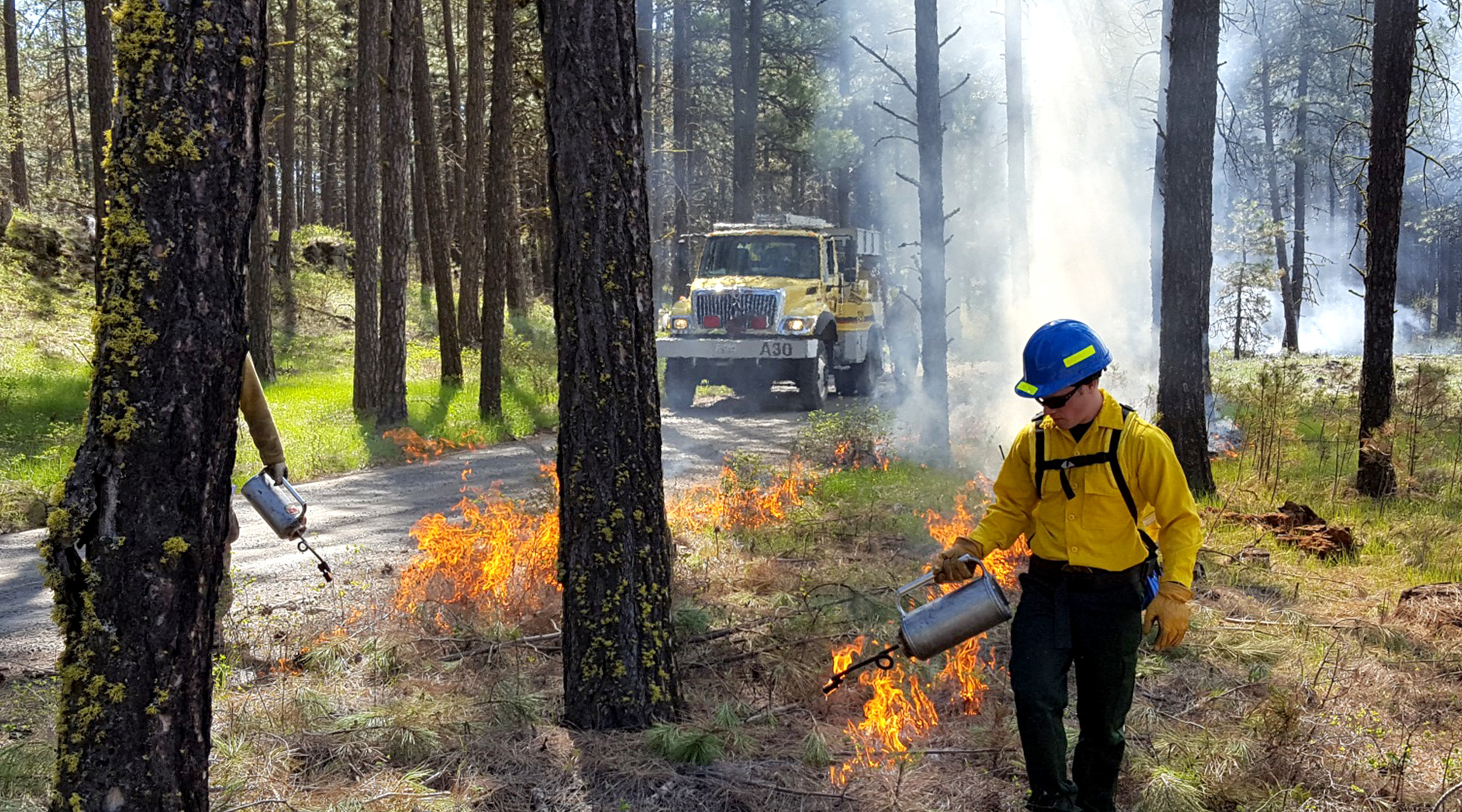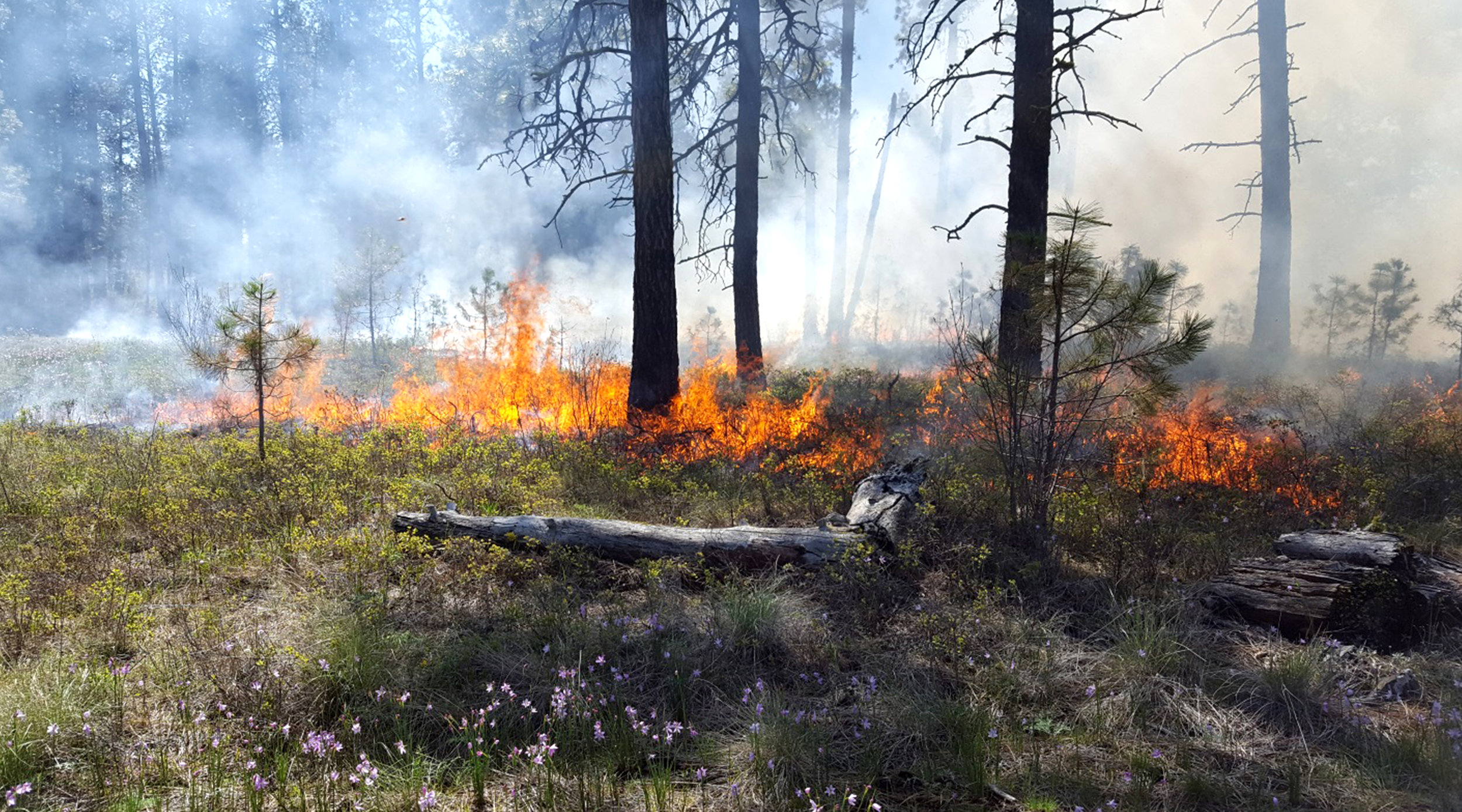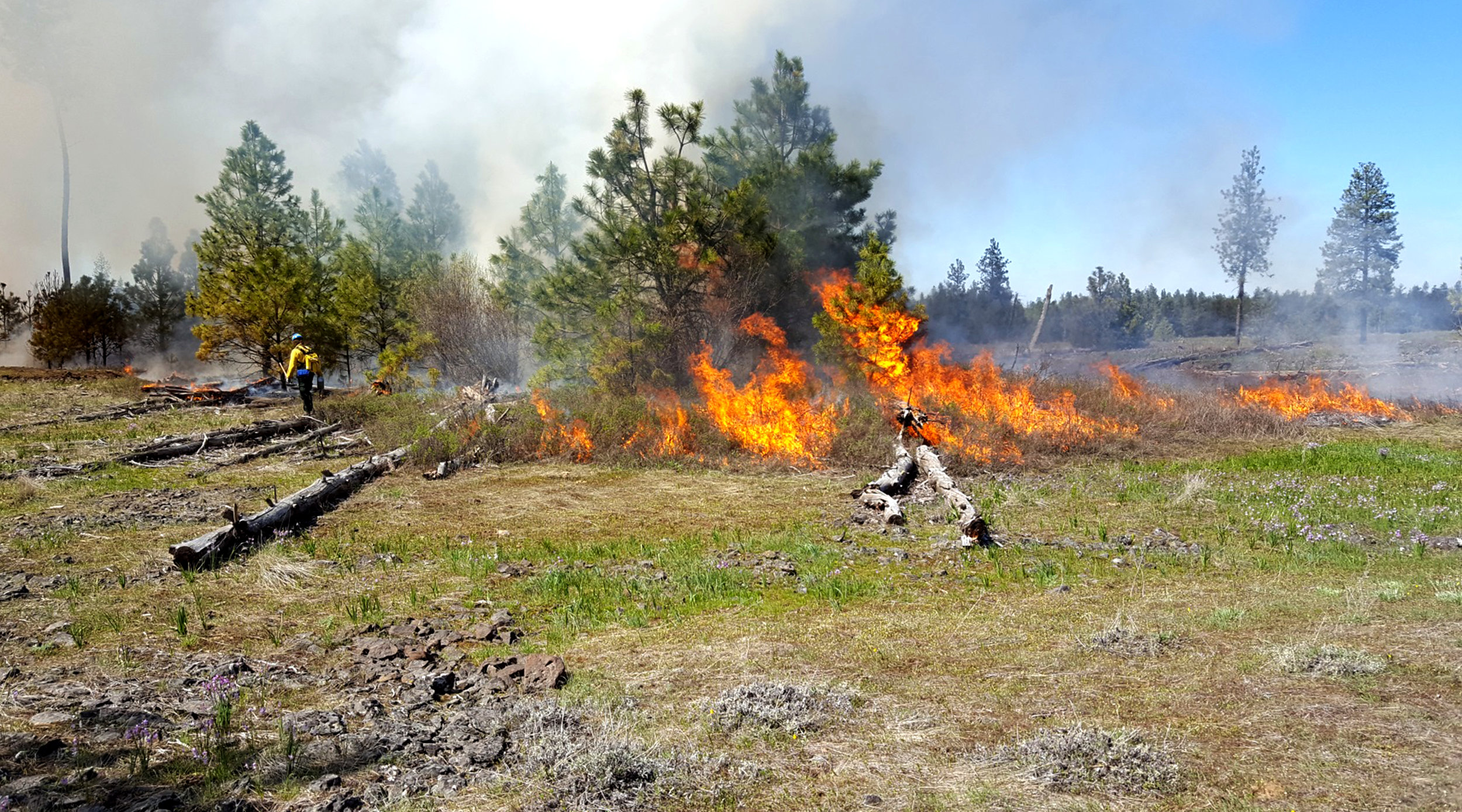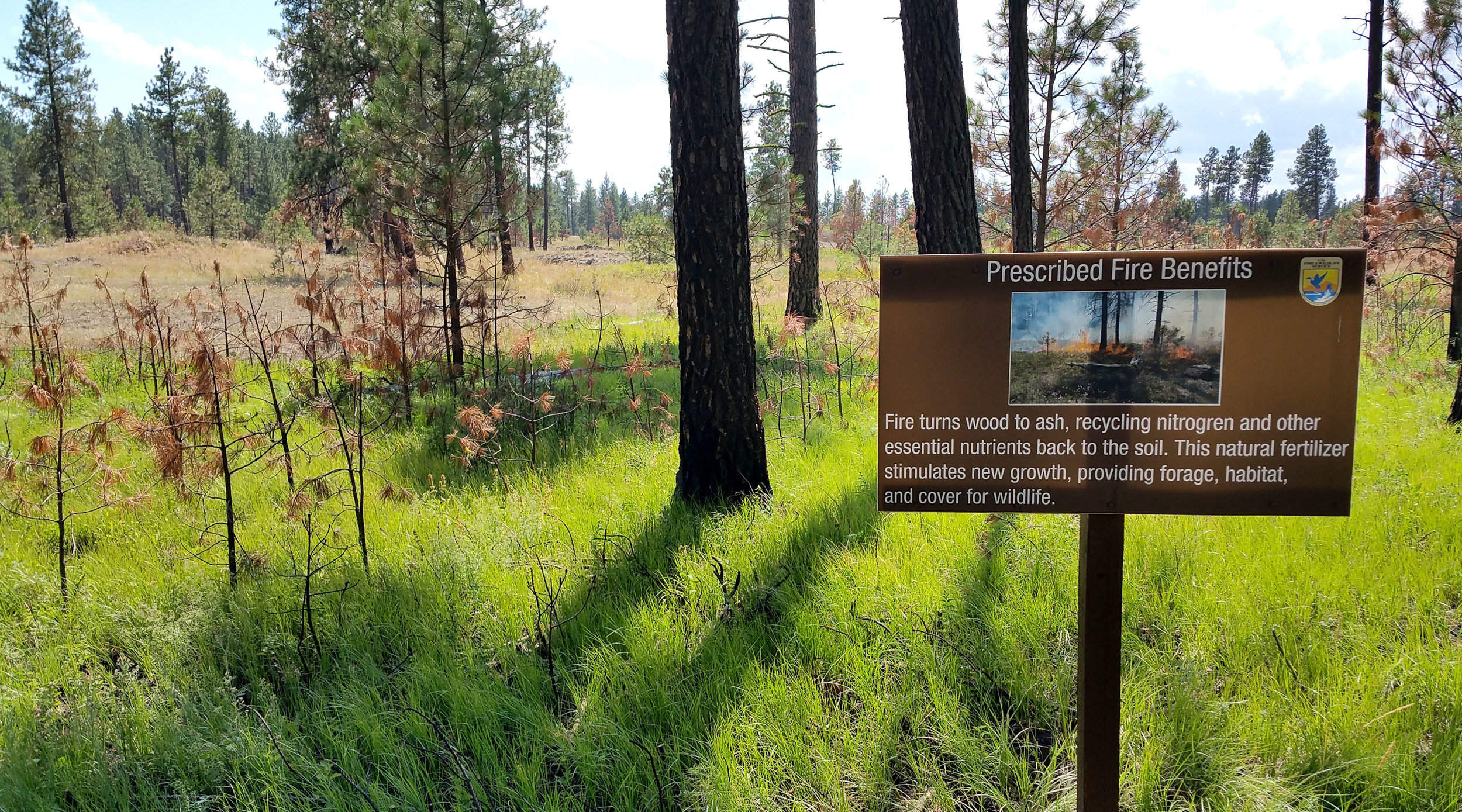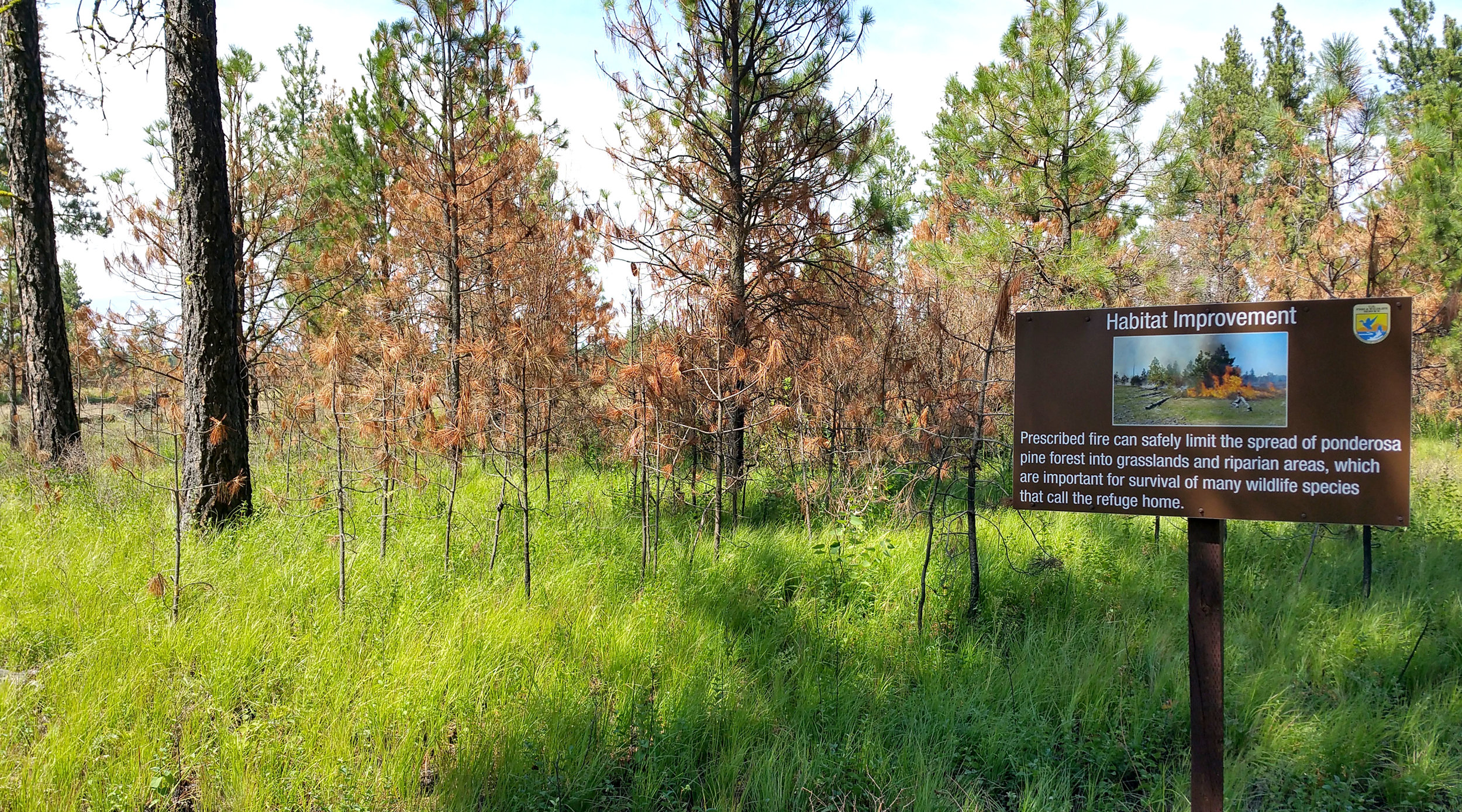Eastern Washington National Wildlife Refuges
Eastern WA offers some of the most unique landscapes in the state, from shrub-steppe and desert wetlands, to Channeled Scablands and ponderosa pine forests. Managed by the U.S. Fish & Wildlife Service, these refuges provide habitat for migrating birds, elk, beavers, ground squirrels and many other species.
Sculpted by Nature
These diverse Eastern Washington landscapes were shaped by ancient forces of water, ice, and fire. Today, prescribed burning continues to be an important tool for managing these areas and providing essential habitat for wildlife.
Managed for Habitat
The Mid-Columbia Wildlife Refuge Complex is a series of wildlife refuges across Eastern Washington and Oregon providing important habitat for Washington’s shrub steppe and desert wildlife, as well as being an important stopover places for migratory birds, including lesser sandhill cranes — a long-lived bird with high loyalty to chosen stopover sites. At Columbia National Wildlife Refuge, land managers conduct prescribed burns along the edges of wetland areas to reduce organic materials and promote growth of new grasses, an important food source for the energetic demands of the migrating cranes.
On February 17, 2016 employees of the Mid-Columbia National Wildlife Refuge Complex, along with cooperators, burned 56 acres of grasses, shrubs, thatch and cattails for the improvement of lesser Sandhill crane habitat.
"Crane use has been more consistent due to the yearly prescribed fire treatments that maintain open habitat for this long-lived migratory bird."
— Heidi Newsome, Mid-Columbia River National Wildlife Refuge Complex Biologist
Building Partnerships
Partnerships are essential to completing prescribed burning across the National Wildlife Refuges of Eastern Washington. At the Inland Northwest National Wildlife Refuge Complex local fire districts, the National Park Service, Bureau of Land Management and the U.S. Forest Service regularly assist with projects. This work has extended into important training opportunities with students at the University of Idaho and other partners.
U.S. Fish and Wildlife Service staff from the Inland Northwest National Wildlife Refuge Complex (NWRC) and Mid-Columbia River NWRC, as well as cooperators from Spokane County Fire Districts 3 and 10, and students from the University of Idaho completed a 40-acre prescribed burn at Turnbull NWR in April 2016.
Engaging the Public
Just south of Spokane, sits Turnbull National Wildlife Refuge, a unique refuge in the channeled scablands area of eastern Washington. Here the desert sagebrush transitions towards ponderosa pine alongside pocket wetlands. Within this refuge the Pine Creek Auto Tour takes visitors — about 60,000 to 70,000 per year — through the refuge and its diversity of habitats. Along the way, educational signs explain the benefits of prescribed burning in maintaining the landscapes in front of them.


